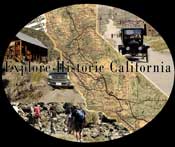Most mountains are “conquered” by
climbers ascending their tallest peak. William Henry Schmidt did
his conquering by digging, drilling and blasting through the
interior of Copper Mountain. Why? Schmidt’s precise
justification went with him to his grave, but “Because it was
there” seems as valid a reason as any.
William Henry Schmidt was born in
Woonsocket, Rhode Island in January of 1871. As a young man, he
was frail and small of stature. Six of his brothers an sisters
died from tuberculosis. He was expected to face the same fate as
his siblings unless he moved to the West with its hot, dry
climate.
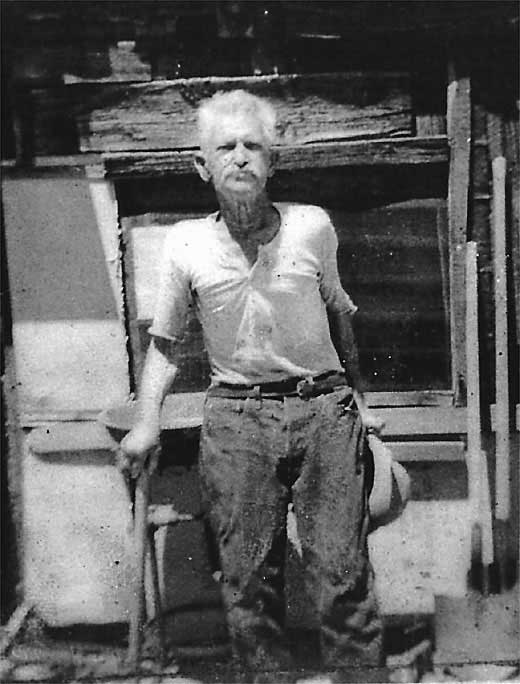 |
|
William Henry
"Burro" Schmidt in his later years. |
Young Schmidt came to California
in 1894, a year before the big gold strike above the Fremont
Valley. He prospected around Kern County and eventually
established claims in the (then) remote interior of the El Paso
Mountains, near Last Chance Canyon. The canyon was known to
travelers before Schmidt’s day. Some forty years earlier, in
February of 1850, William Lewis Manly passed through on his
“escape” from Death Valley. The mountain range, particularly to
the east near Garlock or “Cow Wells” , as it had once been
called, was an established mining area.
A successful mining operation
depends on several factors. First, there must be a worthwhile
body of ore that will allow itself to be separated from the
surrounding rock. Secondly, a transportation infrastructure must
be available to convey the ore to a processing or distribution
facility. Mojave, about 20 miles to the south, was the local
transportation hub. The Southern Pacific Railroad had been there
since 1876. Closer were the mills of Garlock or those in the
young mining town of Randsburg. Schmidt’s dilemma was that no
roads, only scant trails, were available in the El Pasos. His
primary route of travel, like Manly’s, was through Last Chance
Canyon.
There had to be a better route.
This was a time of building, a period of great ideas. Work had
already started on a canal across the Isthmus of Panama. There
was talk of building a gigantic pipeline from the Owens Valley
to bring water to Los Angeles. Schmidt had an idea. He would
build a tunnel through Copper Mountain. Flatlands, meaning easy
access to Garlock or Mojave, lay on the other side. History
remembers that year, 1906, not for the birth of Schmidt’s
Tunnel, but for the destruction of San Francisco by the Great
Quake.
Schmidt apparently had no formal
training in either mining or engineering. He had no power tools,
although the use of such appliances was well established in the
mining industry. He pounded through the solid rock with a pick,
four-pound hammer and a hand drill. The broken rock was carried
out first on his back, and later in a wheelbarrow. Schmidt would
eventually install iron tracks and a mine car to transport
debris beyond the growing tunnel.
Schmidt lived a solitary and
frugal existence in the high desert. His only companions were a
pair of burros, Jack and Jenny. The locals dubbed him “Burro”
Schmidt. His clothes were patched with flour sacks. Tin cans
were pressed into service as soles for his shoes. An old cast
iron stove, purchased second hand, cooked his meals and heated
his one room cabin which was insulated with old magazines. Two
of his favorite meals were supposed to have been pancakes and a
fish chowder made from sardines, rice and boiled onions.
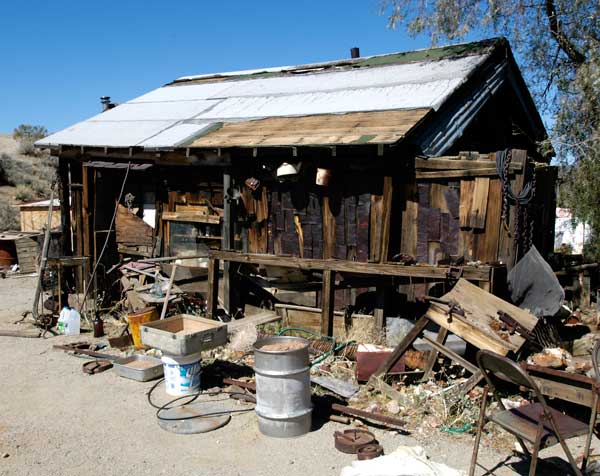 |
|
Schmidt's home
during better days. Schmidt's camp has unfortunately
suffered repeated vandalism since Tonie Seger died
in 2003. |
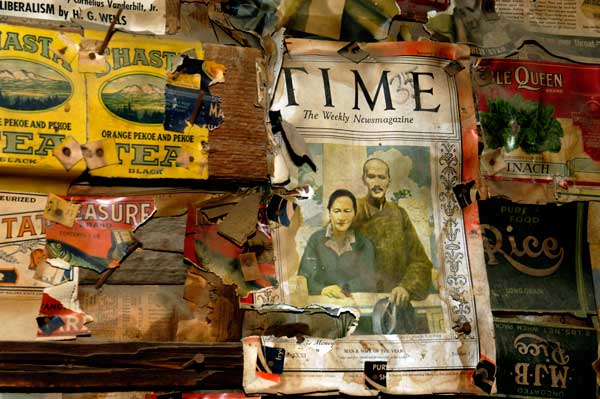 |
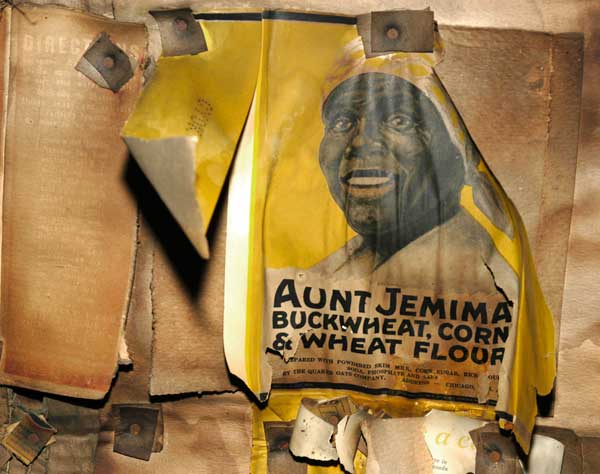 |
|
Schmidt used
old magazines, newspapers and boxes to insulate his
cabin against the desert cold and heat. |
Burro’s mining habits differed
little from his sartorial and eating habits. He did most of the
work by hand. Some explosives were used, but in character with
his frugal nature, Schmidt would cut the fuses as short as
possible. Once the fuse was lit, he literally would run for his
life toward the end of the tunnel and throw himself to the
ground to avoid being struck by the force of the blast and
debris. Sometimes either his fuses were too short, or he didn’t
run fast enough, because he would occasionally show up injured
at another prospector’s shack.
When he could afford it, Schmidt
burned kerosene in his lamps. When kerosene became an
unobtainable luxury, he used candles, but limited himself to one
two-cent candle each day.
Work progressed slowly. At some
point in time, the tunnel mutated from a project into an
obsession. Schmidt would hire out during the summer months on
Kern River ranches in order to generate income to support his
digging. In the 1920’s, a good road was constructed through
lower Last Chance Canyon to the Dutch Cleanser Mine at Cudahay
Camp. It connected with the rail line extended from Mojave in
1909. Schmidt was in his fifty’s, and for most folks, this would
have been reason enough to stop tunneling and get on with
mining.
But reason didn’t stop Burro
Schmidt. He continued tunneling until 1938 when daylight was
finally visible through the far side of his tunnel. Fifty eight
hundred tons of rock had been hollowed out of Copper Mountain.
Sixty seven years old, stooped and
gnarled from thirty two years and more than 2000-feet of
tunneling, Schmidt never used the tunnel to transport ore. He
sold the claim to another miner, Mike Lee, and moved elsewhere
the El Pasos. “I never made a damn thing out of it,” Schmidt
said. He retained ownership in several other claims. The
California Journal of Mines and Geology, April 1949, showed
Schmidt as the owner of the Copper Basin Group of mines (copper)
and the Iron Hat mine (gold).
Burro lived another sixteen years.
He died in January of 1954 at the age of 83 and is buried in the
Johannesburg Cemetery. Was it Schmidt who conquered the
mountain, or the mountain that conquered Schmidt?
 |
| Schmidt
is buried in the Johannesburg Cemetery. |
Robert L. Ripley , cartoonist,
chronicler of human oddities, and author of the “Believe It or
Not” features, made Schmidt’s legacy known to the world in the
1940’s. Ripley called Schmidt “The Lone Miner of the Black
Mountain.” Ripley wrote, “Wm. H. Schmidt spent 32 years boring
thru a mountain. The greatest one man mining achievement in
history. He dug the tunnel 2,000 feet long in order to
facilitate the shipment of ore.”
 |
| Former
tunnel owner Tonie Seger poses with Ripley's letter
to Schmidt, "The Human Mole of Black Mountain". |
Burro Schmidt’s Tunnel is open to
visitors to explore the depths of one man’s obsession.
